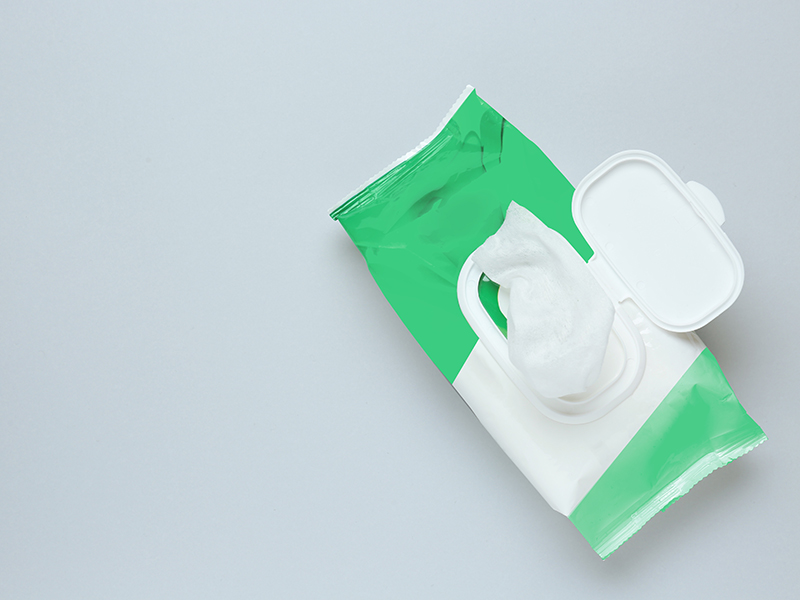
What is the outlook for spunlace nonwovens over the next five years? In our exclusive interview with Phil Mango, author of new report
The Future of Spunlace Nonwovens to 2028, he offers his expert insight into the opportunities and challenges that lie ahead.
Phil has spent almost 40 years in the nonwovens industry, with a wide range of areas of expertise – from applications management for the global leader in nonwoven binders to technology director for the world’s largest airlaid producer. He also founded his own nonwovens company. He entered the consulting field in 2003 and has authored more than 35 reports for Smithers.
How is the industry adapting to the oversupply of spunlace nonwovens since the impact of the pandemic has reduced?
There are several spunlace variants which have differing demand/supply rations. The variant used for disinfecting wipes is currently spunbond/pulp (SP) spunlace. This variant is not as oversupplied as some of the more common variants. Still, some of this product has been moved to other wipe types.
The spunlace industry actually has a broad spectrum of capacity types. Some are modern, cost effective and flexible. These types of lines account for about one third of all spunlace capacity in 2023. These lines are still reasonably full. Another 40% of all spunlace capacity is composed of slightly older, or less efficient lines. These lines are often run at lower margins and/or for lower cost products. Still, many of these lines are running at relatively low capacity. Finally, the last 25-30% of all spunlace lines are older, obsolete or low quality/low efficiency. These are running at much lower capacity and often serve only certain markets and regions. Many of these will shut down over the next five years.
Then there are the specialty lines, like wetlaid spunlace and hydroentangled airlaid, targeting flushable wipes. These lines were initially significantly oversupplied, but expansion here has slowed and supply/demand is coming more into balance. Specialty lines like this often can only make certain products efficiently, which limits their potential markets. Newer, more flexible processes which can produce flushable spunlace have been developed which ultimately may replace many of these lines.
How is the spunlace market adapting to the plastic-free trend?
There are several ways that the spunlace industry has responded to the need for plastics free wipes. One, just changing the raw material mix from polyester/rayon to either all rayon, all lyocell, all cotton, or rayon/lyocell or rayon cotton used in standard card/card based spunlace does produce a plastic free wipe. Card/card spunlace processes account for about 75% of all spunlace lines in 2023.
This solution is expensive and does have some performance deficiencies. New spunlace processes, like carded/airlaid/carded (CAC) spunlace or carded/wetlaid pulp (CPwet) spunlace have been developed and are being commercialized in 2023. These replace some of the more expensive cellulosic staple fibres with wood pulp. This reduces cost and wood pulp can add some desired properties as well.
The newest CPwet lines combine a carding unit in line with an inclined wire head box, allowing a producer (in theory) to produce all carded spunlace (for example, all rayon, lyocell or cotton raw materials); flushable spunlace (turn off the carding unit(s), run the inclined wire like wetlaid spunlace; or high performance, plastic free products with carded cellulosic staple fiber hydroentangled with wood pulp.
What opportunities await the spunlace industry over the next five years?
Some challenges await the spunlace industry over the next five years. Unfortunately, spunlace products deliver better margins than many nonwoven products, and dominate a large growing market (wipes). While more difficult than some, the spunlace process is moderately easy to install and operate, making it a very attractive expansion candidate. This explains the frequent announcements of 20-50 new lines per year. Oversupply is a major issue.
Still, spunlace is harder to install and operate than many other nonwoven types. There are still real differences in quality and performance in lines run by experienced, competent producers. There are real differences in capabilities between older and newer lines. There are real differences between newer processes or variants. The evolution of the wipes market from primarily plastic fibre/cellulosic fibre blends to other raw material mixes, especially those including pulp, will only accelerate the move to replace older, less efficient and less flexible lines with newer lines and processes. Experienced producers with efficient, high performance lines will be successful and profitable; inexperienced producers with older or less efficient, lower performing lines will most likely shut down these lines at a more rapid pace in the next five years.
What are the main threats the industry needs to be wary of going forward?
There are a few major threats. One which we have discussed is oversupply. Just because spunlace is profitable in 2023 and is relatively easy to install and operate does not mean that everyone should expand. Expansion should be focused on real needs, rather than ease of entry. As an example, Andritz and Voith-Trutzschler supply wetlaid spunlace lines which produce flushable spunlace. Both suppliers have made their supply low risk and they provide excellent operational advice. Relatively inexperienced companies can buy such lines with a reasonable expectation of success and at low risk. At one point, everyone wanted these lines, and supply was twice demand. As similar scenario is possible with all card based spunlace. These are the oldest technology, most understood spunlace lines. They are relatively easy and low risk to build and operate; but building such lines should be tied to specific needs. Oversupply is a major threat to this industry.
Another threat is relying too heavily on one major market, wipes. I am sure that in the 1990s, few industry experts projected spunlace would replace airlaid in wipes, or that in the 2000s, SMS would replace spunlace in medical drapes and gowns. And yet they did. Spunlace producers need to continue to develop new markets, like hygiene or filtration for spunlace products.
Finally, spunlace process developers need to continue to develop new processes addressing sustainability concerns. The future may demand
more dispersible or stronger or softer flushable wipes. The future may demand an equivalent strength and abrasion resistant disinfecting wipe based on non-plastic raw materials rather than spunbond polypropylene. Spunlace as a process is uniquely situated to address the need for more sustainable nonwovens; now the industry must turn this potential into reality.

